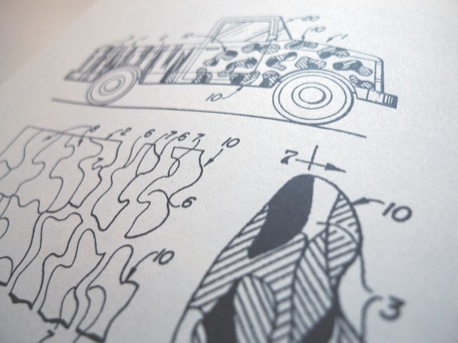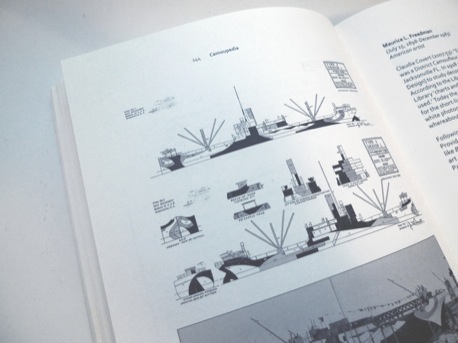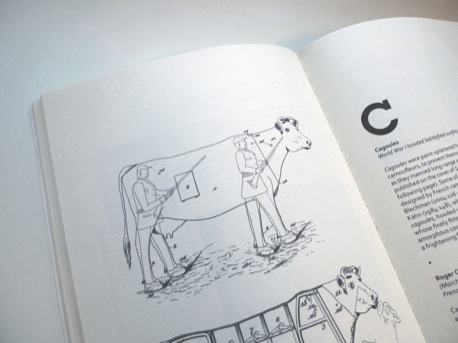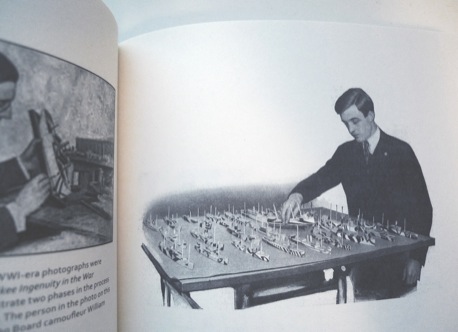Camoupedia
Review by Daniel Gray
Within minutes of picking up Roy R. Behren’s Camoupedia (Amazon link
(Click to enlarge)
Before I got into it, I was half expecting a Jane’s Reference-like book, full to the brim with painstakingly catalogued military markings (something that the superglue-fingered Airfixkid in me would have treasured), but its scope is far broader than that. Encompassing everything from Picasso to the evolution of mice, this is an essential reference for anyone interested in the subject matter and its broader context.
“By far the most famous eyewitness account of modern camouflage is reported in Gertrude Stein’s autobiography, which she impishly mistitled The Autobiography of Alice B. Toklas. During the first winter of the Great War, as she and Pablo Picasso were walking at night on the Boulevard Raspail, ‘All of a sudden down the street came some big cannon, the first any of us had seen painted, that is camouflaged. Pablo stopped, he was spellbound. ‘C’est onus qui avons fait ca,’ he said, ‘it is we who have created that.'”
A lot of the entries are biographical entries of key camoufleurs (the artists and officers responsible for the techniques), which in themselves are quite dry. However, the tapestry of these characters comes to life when you come across an entry about how their work has been adopted by the fashion world or incorporated into a audacious method for hiding entire munitions factories. Behrens clearly knows his stuff, and is generous with his references to other resources. As well as the encyclopedic structure. there’s a comprehensive bibliography, index and timeline (which goes all the way back to Darwin’s theory of natural selection).
(Click to enlarge)
Of course, as fascinating as the text is, when you pick up a book about camouflage, you want pictures. Big pictures. Big colour pictures. This is where Camoupedia’s format lets the subject-matter down a little. Where the reproduced pictures are simple line-work, such as the numerous drawings submitted for bizarre patent applications, the black-and-white print works fine. However, when you’re looking at a picture of a brightly-coloured aircraft or an animal blending in to its background, the lack of colour robs it of any impact. Ironically, the camouflage on display is so good, at times you can’t actually see it. I’m sure the author would have loved to have had a full-colour coffee table tome, so it is not so much a criticism of his work, but of the budgetary constraints of a book that is unlikely to shift huge numbers and whose source material was probably black and white in any case.
(Click to enlarge)
That said, at least there is no shortage of pictures. A lot of attention is paid to dazzle-painted camouflage – the technique of using brightly coloured, high contrast disruptive shapes on a ship’s hull, not as a means to hide it, but to force enemy U-boats into miscalculating its distance, speed and trajectory. Despite the lack of colour, the numerous photographs and technical drawings on display here contradict the common image of steel-grey WWII warships, instead revealing them to be garish and visually arresting, a style that rightfully garnered comparisons to the cubist movement. For me, looking at these designs led to a far-too-long stint on Google to look for bigger and better pictures, now armed with knowledge of the history behind them.
(Click to enlarge)
On its own, this book is good – you learn some interesting things, you get a feel for the cultural context of the form – but Camoupedia’s real strength is as a starting point from which to explore one of the numerous intriguing avenues it sends you down. The breadth of the information contained in this book demonstrates how design can sit comfortably in the intersection of topics as diverse as nature, science, art and warfare. That such an encyclopedia still has a place in the modern I’ll-just-look-it-up-on-Wikipedia world is testament to the authority of Behrens’ research and his contagious love for the subject.
Update: Roy Behrens now has a blog collating his continuing research into the subject.
Camoupedia is published by Bobolink Books, Amazon US
About the Reviewer
Daniel Gray is a graphic designer living and working in York. He also writes the blog Binky the doormat and manages the Flickr group The Face (1980-2004)






